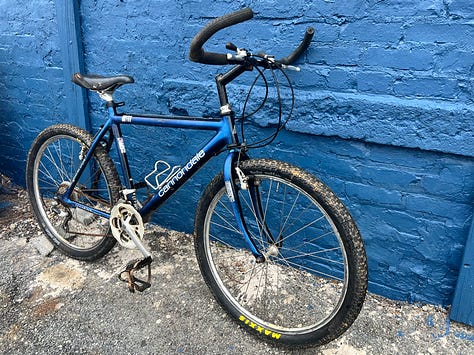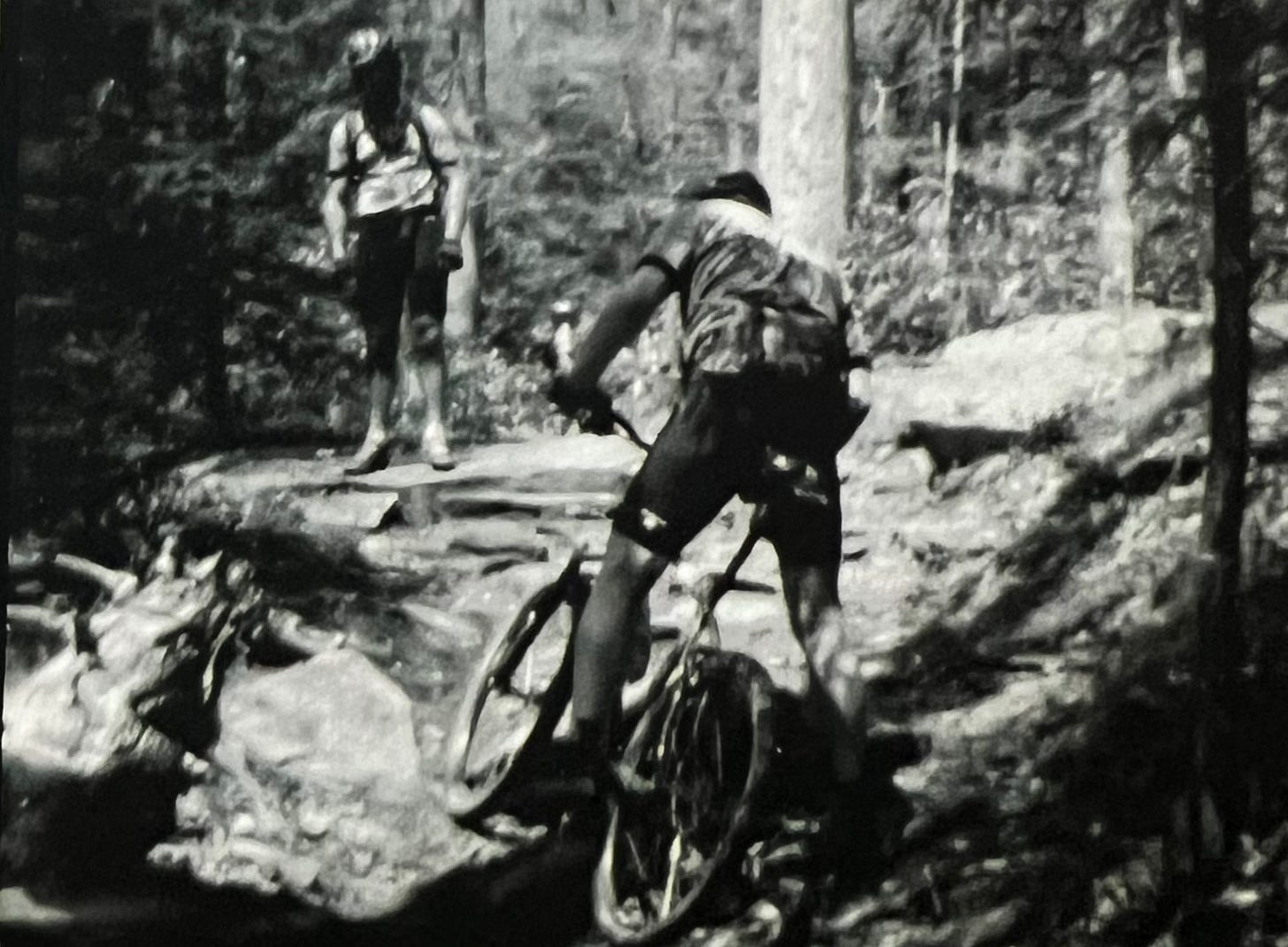The Mountain in Mountain Biking - The Friction of Discomfort
Modern bicycles offer plenty of comfort and safety on the trail compared to those of years past, but does that sacrifice the growth that comes with being uncomfortable?
Kristian Jackson is based in Boone, NC, and brings a wealth of mountain biking expertise from his experiences on the trail and in the classroom. As a Senior Examiner for the Professional Mountain Bike Instructor Association, the Trail Boss at Rocky Knob Mountain Bike Park, and Senior Lecturer in Recreation Management at Appalachian State University, he combines his knowledge from a myriad of unique experiences in all aspects of his career. Beyond his professional life, Kristian is dedicated to his family, living with his wife, Alecia, and their two sons, Silas and Jude. This is the first of what will be several articles from Kristian in a series called ‘The Mountain in Mountain Biking,’ which will feature stories and ideas from where ambition and obstacles collide, based on his own observations and discussions we have shared.
My first mountain bike came equipped with friction thumb shifters and a chainstay-mounted rack. The Sun Tour mechanisms that shifted gears were clamped to the bars and looked like twin bells. I took the rear rack off to keep the bike quiet. It hardly resembled the bikes many of us ride nowadays and was more akin to what most would now consider a “commuter” bike, and by today’s standard, it was certainly not fit for the trail. It was 1991, I had just started classes at North Carolina State University, and my bike was one of my most prized possessions. I kept it in my dorm room, not the racks, as prescribed by the rules. BMX bikes had taught me the value of two-wheeled freedom, and that bike crammed beside a bunkbed incited a new freedom I had never experienced before. It was freedom that I wouldn’t risk losing. Along with the freedom came a belief — an optimism that anything was possible and that my bike could take me there.
“Those trails became a passageway to new territories where the immediacy of the moment created a palpable alignment with the forces of the natural world.”
I took that belief to the crude, unmarked, un-sanctioned trails in the nearby woods. These weren’t mountain bike trails. They were simple footpaths. Mountain biking was an uncharted activity in many places, much less Raleigh at the time. An actual mountain bike trail was something that didn’t exist in my world. Word of mouth led to informal trailheads behind strip malls and at the end of cul de sacs, and there were undoubtedly no maps. Leaving the pavement without a map, a guidebook, let alone a phone or an app, as we have nowadays, felt like leaving the known world behind. Those trails became a passageway to new territories where the immediacy of the moment created a palpable alignment with the forces of the natural world. Each time I journeyed off the pavement, a thread of anxiety would rise, and my heart would beat in my temples. I learned to read these signs as evidence I was moving forward towards something good.



Balancing “Performance” and “Skill”
On the trail, my bike itself was uncharted terrain. Those thumb shifters added a layer of challenge to the rough trails that never existed to be traveled on two wheels in the first place. The shifter's order of operations required full attention away from the roots and off-camber slopes: Hand off of the grip, soft pedal, twist the ratchet the lever, listen for the chain to move through the cogs, and hope to land on the right one in time to make it up the next climb. The result may or may not have led to the correct gear. Sometimes, the friction mechanism’s D-ring would unpredictably loosen, resulting in a “ghost shift” into a harder gear — usually on a climb. And all of that was just one component of the bike.
If I wanted to keep moving forward and not end up on the ground, I had to constantly study and analyze the shortcomings of the bike and fill the gaps in the bike’s performance with skill.
On the rigid fork, cantilever brakes struggled to work and slow the speed of the wheels against non-machined rim sidewalls. Toe cages on the pedals ratcheted my Chuck Taylors down tight enough to provide some power but still loose enough to bail. If I wanted to keep moving forward and not end up on the ground, I had to constantly study and analyze the shortcomings of the bike and fill the gaps in the bike’s performance with skill.
Even with an ever-developing intimate knowledge of the bike’s performance (or lack thereof) and my own skills, falling was common due to terrain that was too technical for nascent skill, the performance shortcomings of the bike itself, or both. Walking what wasn’t rideable was simply part of the non-linear process of becoming a mountain biker. Staying in that process taught me that, like my thumb shifters, there was a friction of uncertainty between what I wanted to do and what I had yet to learn.
Some years later, by the time I had a bike with indexed shifters (still a far cry from the bikes of today), I was in charge of leading others on trails. Mountain biking had moved from its place as a side activity for climbers and kayakers into its own discipline. Technological advances such as indexed shifting, V-brakes, machined rim sidewalls, and suspension all made riding more user-friendly, more predictable, and, in turn, more mainstream. I upgraded bikes and apprenticed under the tutelage of river rats and rock climbers, eventually landing a gig with the North Carolina Outward Bound School instructing 14-day long mountain bike expeditions.
Twenty minutes into the hour-plus climb, several students had stopped, not to rest but to protest. “We didn’t sign up for this. This isn’t mountain biking.”








